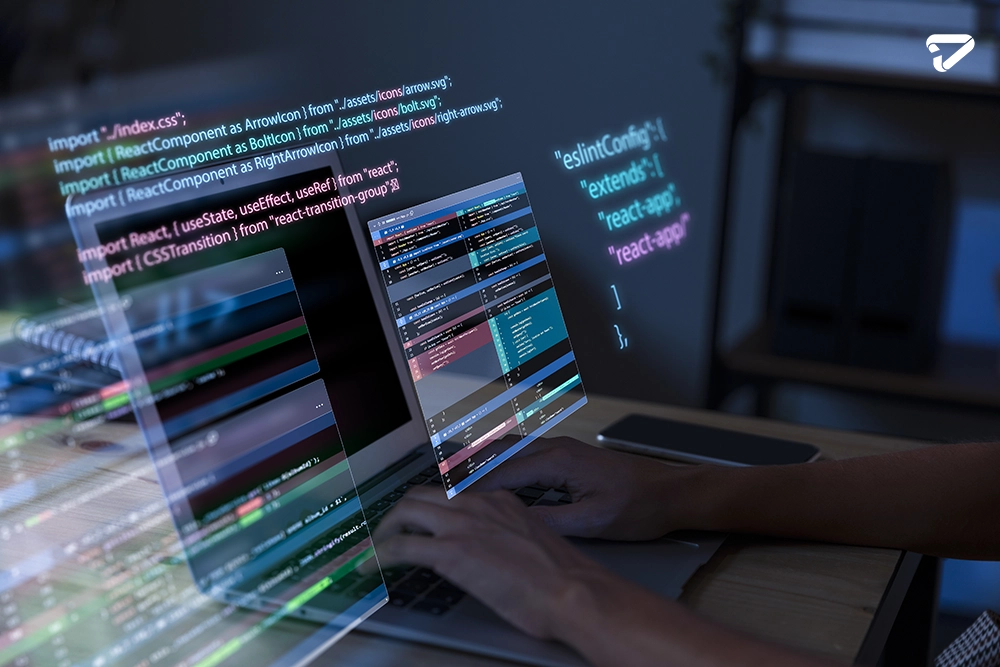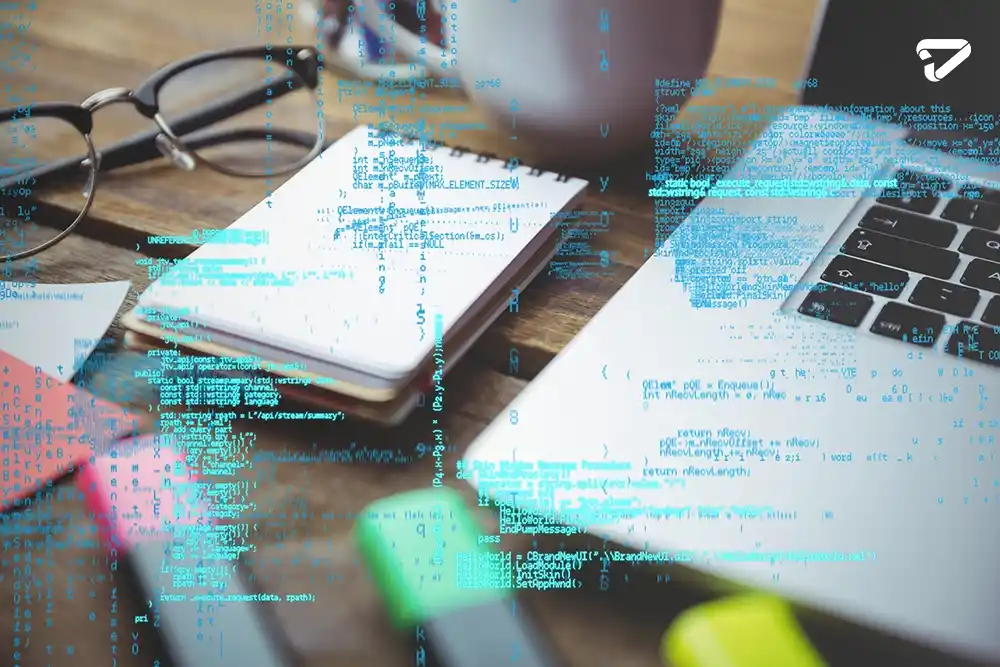
Explain how coding in web design
Coding in web design involves using languages like HTML, CSS, and JavaScript to create interactive, visually appealing, and responsive websites.
In today’s digital era, the significance of a well-designed website is paramount.
However, the critical role that coding plays in web design is often overlooked.
This article aims to delve into the intersection of coding and web design, illuminating how these two disciplines collaborate to create the websites we interact with daily.
danabak agency can provide you web design in charlotte and leading you to learn coding for web design.
Our primary focus keyword for this exploration is “Coding in Web Design”.
The Intersection of Coding and Web Design
Web design is not just about creating visually appealing layouts; it’s about functionality, user experience, and interactivity.
These aspects are largely influenced by coding.
Coding, in the context of web design, involves using programming languages like HTML, CSS, and JavaScript to bring a designer’s vision to life on the web.
HTML (HyperText Markup Language): This is the backbone of any website. It provides the basic structure, which is then enhanced and modified by CSS and JavaScript.
CSS (Cascading Style Sheets): This language is used to control the visual appearance of the website, including layout, colors, fonts, and animations.
JavaScript: This is what makes a website interactive.
It’s used for creating dynamic content such as interactive forms, animated graphics, and real-time map updates.
These three languages work together to create a cohesive, interactive, and aesthetically pleasing web experience.

The Importance of Coding in Web Design
Coding is essential in web design for several reasons:
Interactivity: Coding allows for user interaction, which is crucial for any website.
This includes features like contact forms, comment sections, and shopping carts.
SEO: Proper coding can improve a website’s SEO, making it easier for search engines to index and rank the site.
Performance: Efficient coding can improve a website’s loading times and overall performance, leading to a better user experience.
Customization: With coding, designers are not limited to template designs.
They can customize every aspect of the website to match their vision.
In conclusion, coding is a fundamental aspect of web design.
It allows for the creation of functional, interactive, and aesthetically pleasing websites.
Understanding the role of coding in web design can help aspiring designers and developers create more effective and engaging web experiences.
In the realm of web design, coding is the silent hero that brings design to life.
It’s the bridge between a static design and a dynamic, interactive website.
Whether you’re an aspiring web designer, a seasoned developer, or a business owner looking to create a compelling online presence, understanding the role of coding in web design is crucial.
As we’ve explored in this article, coding is not just about making a website function—it’s about enhancing user experience, improving SEO, and bringing a creative vision to life on the web.
Keywords Used
Coding in Web Design
- HTML
- CSS
- JavaScript
- Interactivity
- SEO
- Performance
- Customization
Understanding the Basics of Web Design
Web design is the process of creating websites.
It encompasses several different aspects, including webpage layout, content production, and graphic design.
While the terms web design and web development are often used interchangeably, web design is technically a subset of the broader category of web development.
In today’s digital world, web design goes beyond just the aesthetics.
It’s about creating a user-friendly interface that’s intuitive, engaging, and meets the user’s needs.
This is where coding comes into play in web design.
Coding is the backbone of a website, turning a beautiful design into a fully functioning site.
Without coding, a web design is just a static image.
The role of coding in web design is like that of a builder constructing a house.
The architect’s design is important, but without the builder to turn that design into a reality, it remains just a blueprint.
Similarly, coding turns a web design from a static visual into an interactive website.
In the context of “Coding in Web Design”, understanding the basics of web design and the role of coding is the first step towards appreciating the complexity and beauty of a well-designed website.

The Intersection of Coding and Web Design
The intersection of coding and web design is where the magic happens.
It’s where a static design becomes an interactive experience.
But how exactly does coding fit into web design?
To understand this, we need to delve into the structure of a website.
A website is made up of several layers:
the structure, the presentation, and the behavior.
Each of these layers corresponds to a different coding language.
Structure (HTML): HTML (HyperText Markup Language) is the foundation of any website.
It creates the structure of a website, defining elements like headings, paragraphs, and links.
In terms of web design, HTML is like the skeleton of the website.
Presentation (CSS): CSS (Cascading Style Sheets) is used to control the look and feel of a website.
It determines the layout, colors, fonts, and other stylistic elements.
In the context of web design, CSS is like the skin and clothing that give the website its appearance.
Behavior (JavaScript): JavaScript is used to make websites interactive.
It enables features like slideshows, forms, and other interactive elements.
In terms of web design, JavaScript is like the muscles that allow the website to move and interact.
In the realm of “Coding in Web Design”, these three coding languages work together to turn a static design into a dynamic, interactive website.
The web designer creates the visual design, and then the coder uses HTML, CSS, and JavaScript to bring that design to life on the web.

The Importance of Coding in Web Design
The significance of coding in web design is paramount.
It’s the magic that breathes life into a design, making it functional and interactive.
Here are some reasons why coding is a crucial component in web design:
Interactivity: Coding enables interactivity on websites.
Features like contact forms, sliders, animations, and more are all made possible through coding.
Without it, a website would merely be a static, one-dimensional page.
SEO: Coding also plays a pivotal role in SEO (Search Engine Optimization).
Proper coding ensures that a website is easily readable by search engine bots, which can significantly improve a website’s ranking on search engine results pages.
Performance: The performance of a website, including its loading speed and responsiveness, is largely determined by its coding.
Efficient coding can make a website load faster and provide a better user experience.
Customization: Coding gives a web designer complete control over the website’s appearance and functionality.
This allows for a high level of customization, enabling the designer to create a unique website that stands out from the competition.
In the context of “Coding in Web Design”, it’s clear that coding is not just a nice-to-have skill, but a necessity for anyone serious about web design.
It’s the tool that turns a static design into a dynamic, interactive, and optimized website.

Learning Coding for Web Design
If you’re interested in web design, learning to code can be a game-changer.
Here’s a step-by-step guide on how you can start learning coding for web design:
Start with HTML: As the foundation of web design, HTML is the best place to start.
There are plenty of online resources and tutorials that can help you get started with HTML.
Move on to CSS: Once you’re comfortable with HTML, you can start learning CSS.
CSS will allow you to style your HTML elements and make your website visually appealing.
Learn JavaScript: After mastering HTML and CSS, you can move on to JavaScript.
JavaScript will allow you to add interactivity to your website, making it more engaging for users.
Practice, Practice, Practice: The best way to learn coding is by doing.
Build your own projects, no matter how small, and gradually take on more complex tasks.
This will not only help you learn faster but also build your portfolio.
Keep Learning: The world of web design and development is constantly evolving.
New tools and technologies are being introduced all the time.
So, keep learning and stay updated with the latest trends and technologies.
In the context of “Coding in Web Design”, learning to code is a journey.
It requires patience, persistence, and a lot of practice.
But the rewards are well worth the effort.
With coding skills under your belt, you’ll be able to create more dynamic, interactive, and unique web designs.

Resources for Learning Coding for Web Desig
If you’re ready to embark on your journey of learning coding for web design, there are numerous resources available to help you along the way.
Here are some of the best resources to get you started:
Online Courses: Websites like Coursera, Udemy, and Codecademy offer comprehensive courses on HTML, CSS, and JavaScript.
These courses are designed for beginners and often include hands-on projects to help you apply what you’ve learned.
YouTube Tutorials: YouTube is a treasure trove of coding tutorials.
Channels like Traversy Media, The Net Ninja, and freeCodeCamp.
org offer free, high-quality tutorials on a range of coding topics.
Books: If you prefer learning from books, titles like “HTML and CSS: Design and Build Websites” by Jon Duckett.
and “JavaScript and JQuery: Interactive Front-End Web Development” by the same author are excellent resources.
Coding Bootcamps: Coding bootcamps are intensive, short-term training programs that teach you the skills you need to become a web designer or developer.
They can be a great option if you’re looking to make a career change quickly.
Practice Platforms: Websites like CodePen and JSFiddle allow you to write code directly in your browser and see the results in real time.
They’re great for experimenting with code and sharing your work with others.
In the context of “Coding in Web Design”, these resources can provide you with the knowledge and skills you need to start coding your own web designs.
Remember, the key to learning coding is practice, so make sure to apply what you’ve learned through projects and exercises.

Conclusion
The intersection of coding and web design is a fascinating and dynamic space.
As we’ve explored in this blog post, coding is an essential skill for any web designer.
It’s what brings a design to life, makes it interactive, and ensures it performs well on search engines.
Whether you’re a seasoned web designer looking to upskill or a beginner just starting out, learning coding can significantly enhance your web design capabilities.
With resources like online courses, YouTube tutorials, books, coding bootcamps, and practice platforms, there’s never been a better time to start learning coding for web design.
In the context of “Coding in Web Design”, the journey of learning to code may be challenging, but it’s also incredibly rewarding.
So why wait?
Start your coding journey today and unlock a new level of creativity and innovation in your web designs.
Call to Action
Ready to start your journey of learning coding for web design?
Sign up for our comprehensive coding course designed specifically for web designers.
Learn HTML, CSS, and JavaScript from industry experts and start creating dynamic, interactive, and unique web designs today.








